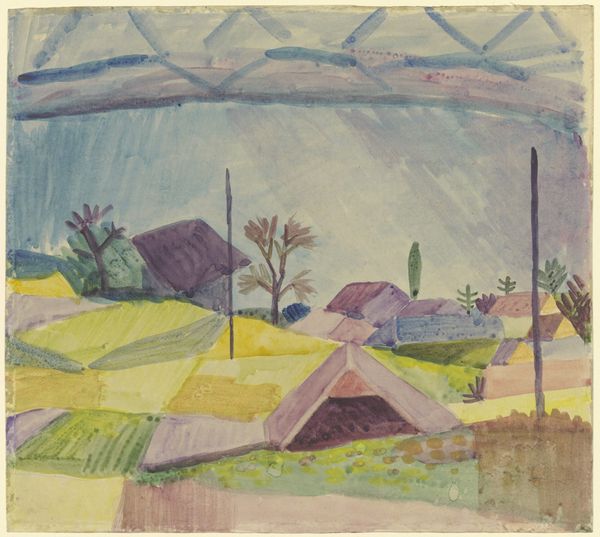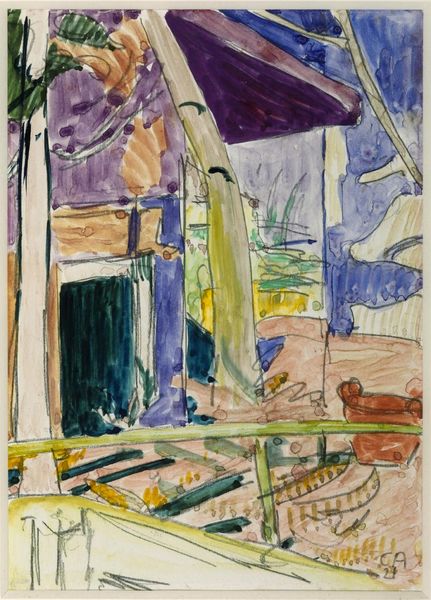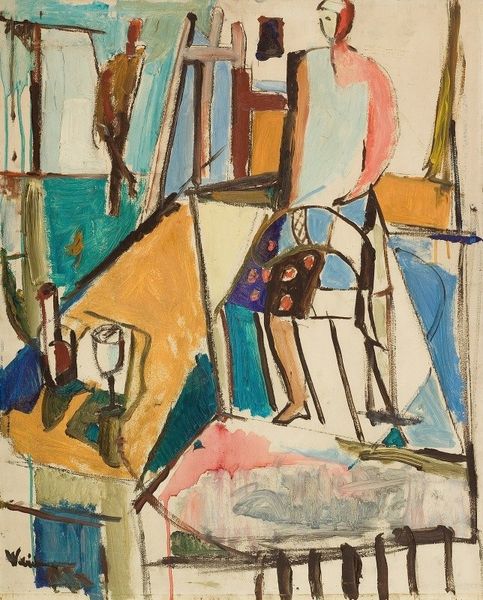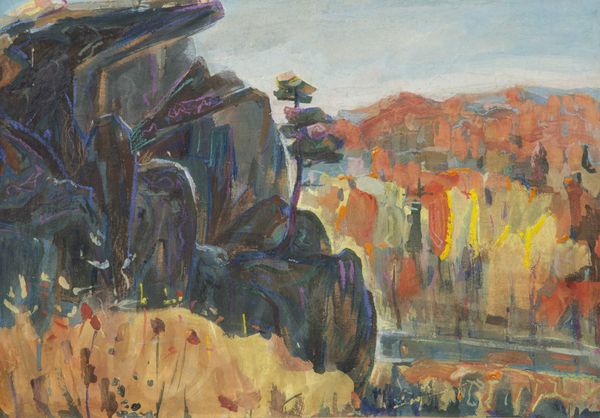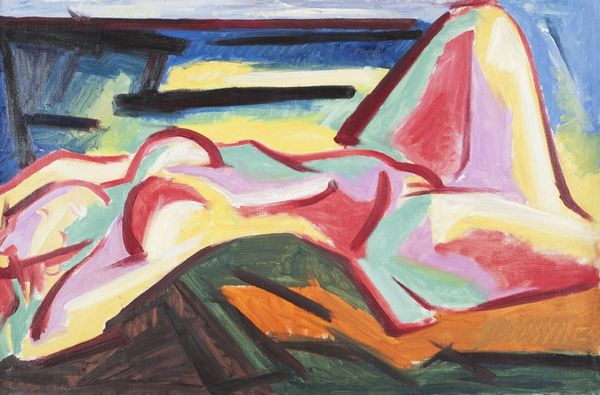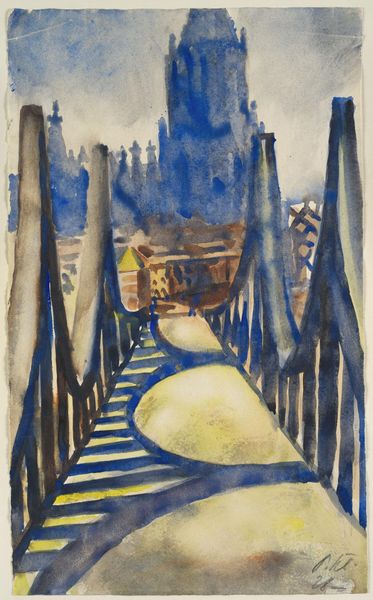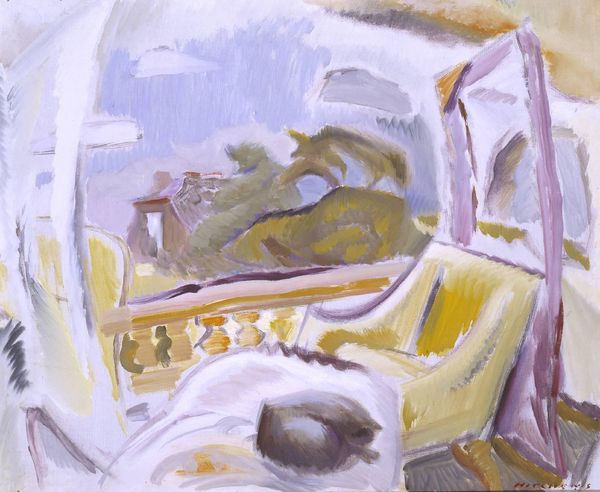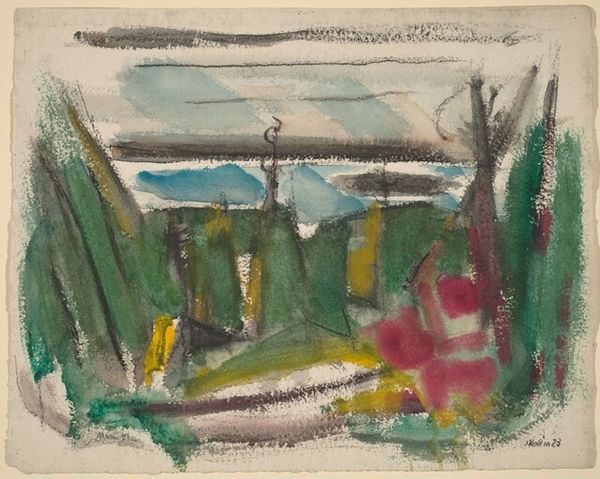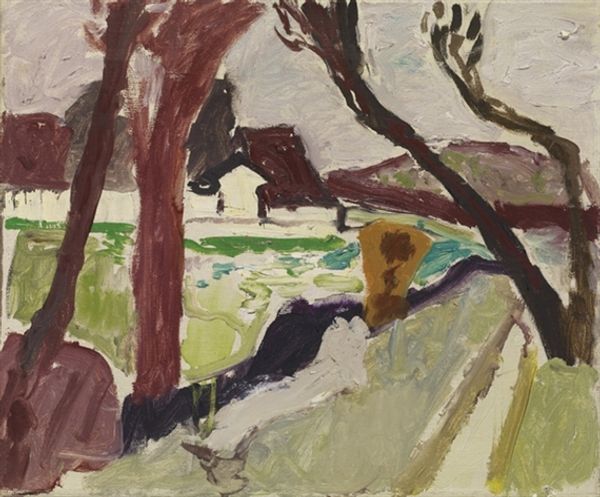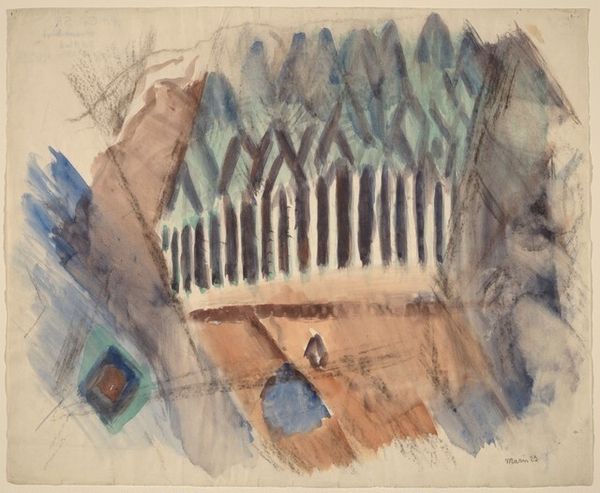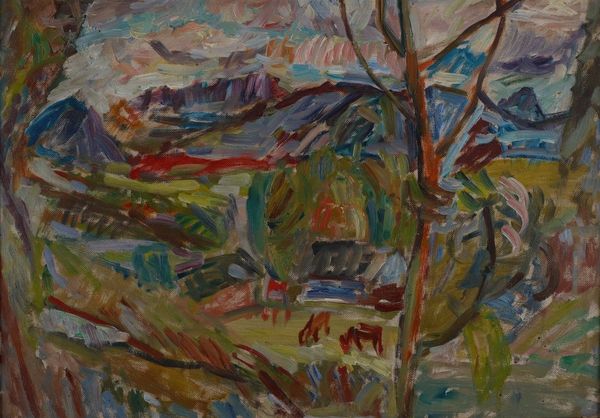
Copyright: Valerii Lamakh,Fair Use
Editor: Here we have Valerii Lamakh's "Landscape," painted in 1959 using oil paint. The earthy tones create a very grounded, almost weighty feeling. There's a lot of geometry and distinct sections. What do you see in this piece? Curator: The painting showcases a fascinating interplay between representational forms and abstract compositional elements. Notice the flattened perspective, how depth is suggested but not fully realized. Lamakh manipulates the traditional landscape format into a series of interlocking shapes and planes. What purpose does that serve for the composition? Editor: It creates a slightly disorienting effect, I think. The shapes don't quite resolve into a clear scene. It makes me consider the paint itself. Curator: Precisely. The materiality of the oil paint is also significant here. Consider the visible brushstrokes, the impasto in areas that suggest a certain gestural quality and the tension created. Where does Lamakh create harmony and dissonance within the composition itself through line and form? Editor: The diagonals of the trees meeting the horizontal lines of the fields create a dynamic, but there is still an unfinished mood here because nothing blends properly. It feels disrupted, not quite balanced. Curator: Disruptive how? Consider the way color creates contrasts, rather than depth; where are the greatest differences? The composition is pushing back against what a landscape should achieve, no? Editor: Yes! The red roof juxtaposed with the green foliage does it; that is jarring. I see how Lamakh isn’t interested in a realistic depiction; he is dismantling and reassembling something entirely new with color relationships. Curator: Indeed. Through this formal tension and structural decomposition, we can see this work in relation to explorations within modernism, but one distinctly attuned to the locale it interprets. Editor: That’s fascinating! Now I can better understand how the tension of the composition and texture contribute to its modern, almost deconstructed sensibility. Thanks so much.
Comments
No comments
Be the first to comment and join the conversation on the ultimate creative platform.

